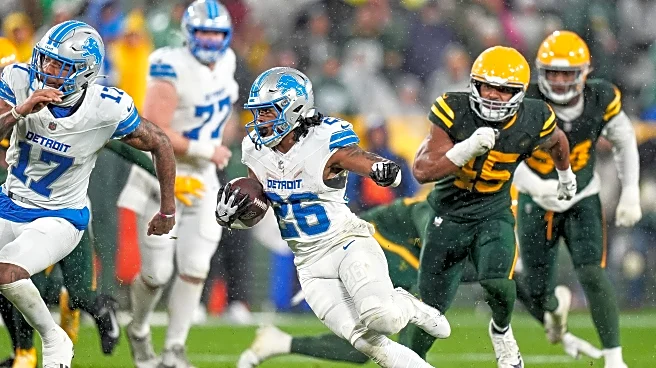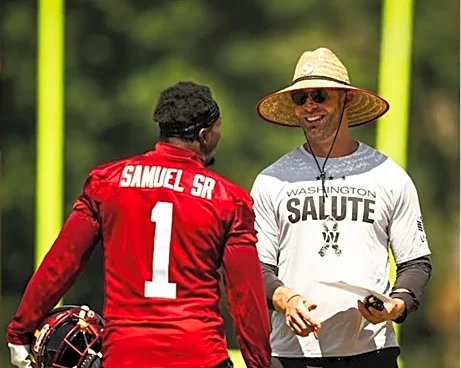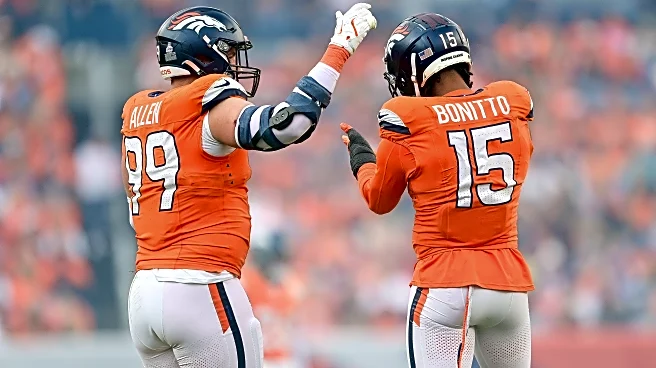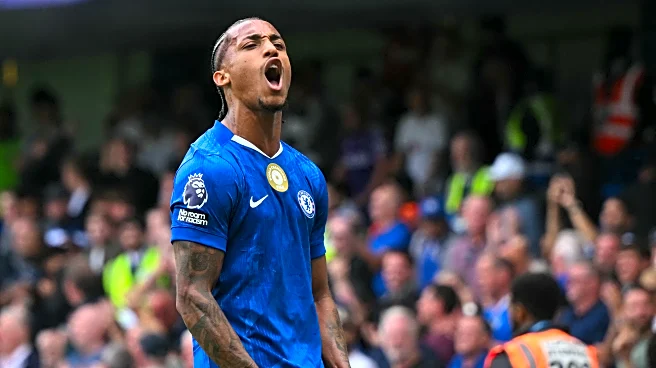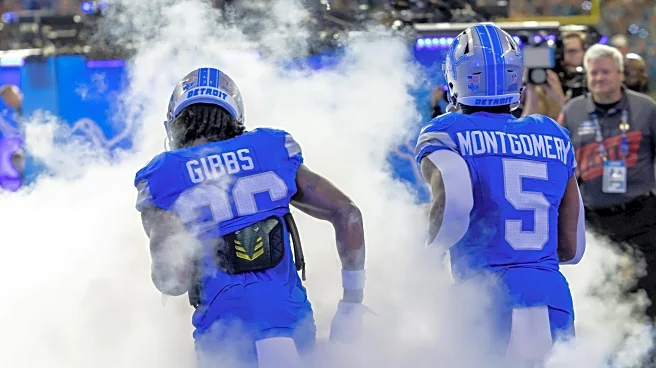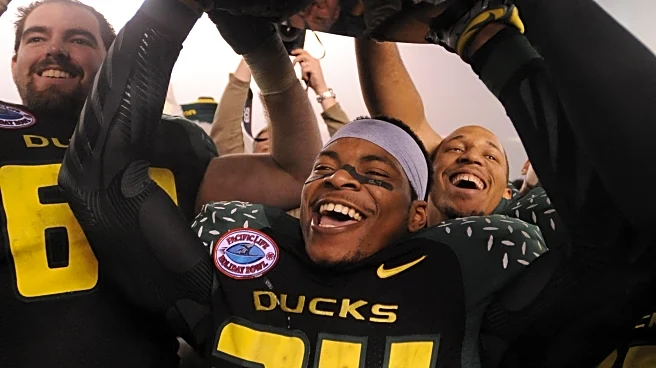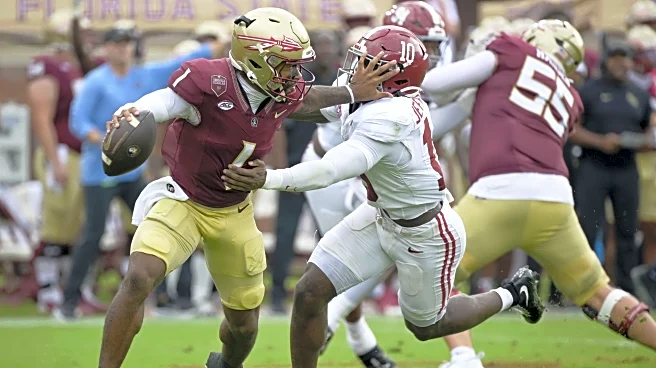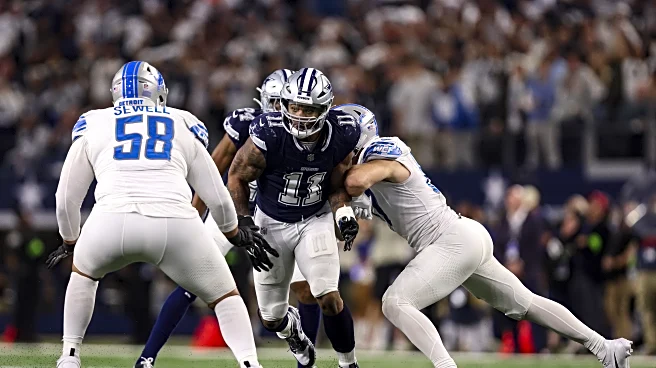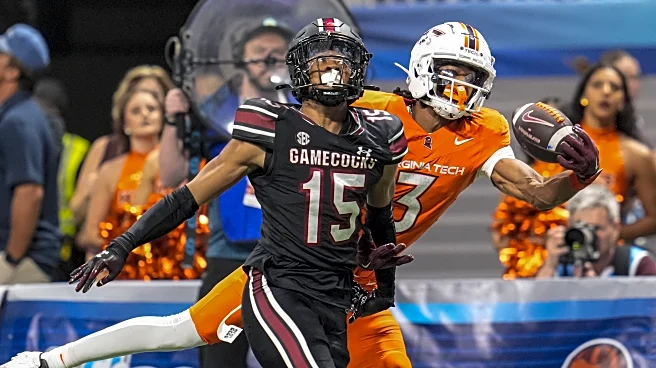
The NFL 2025 season is here, and that means it’s time for another year of our On Paper previews!
On Paper is a preview I developed over 15 years ago that strives to do one thing that most NFL previews don’t: compare units that are actually going against each other. Too many previews compare which team has the better offense and defense. That makes little sense when those units aren’t facing off.
The other primary goal is to avoid relying on overall stats and to focus on putting those stats into context.
A team putting up 300 yards and four touchdowns could mean very different things. If it’s against the worst pass defense in the league, that may be expected. If it’s against the best defense, it’s an outstanding performance. Most traditional statistics do not take this into account, and the advanced ones that do can be a bit convoluted.
So, I attempt to accomplish the same thing the advanced statistics do, but in an easy-to-digest way: via the charts below. Simply put, I take the raw statistics of a game (yards, yards per carry, passer rating) and compare those statistics to season-long averages. If the team performed 5% better than the season average, the cell is shaded green. If it’s within 5% of the average, it’s yellow. If they performed 5% or more worse than the average, it’s red.
At the end of each section, I provide an “advantage” on a scale of 1-5, based on three factors: how lopsided the advantage is, how confident I am in my analysis, and the overall impact I believe it will have on the game. This part is admittedly less objective, but 100% objectivity is impossible.
This year, with the help of my cousin (thanks, Jaime!) On Paper got a facelift and added a percentage difference stat to see just how lopsided each performance may have been. I hope you like it, and if you don’t: please don’t go on a social media rant about how new corporate designs are part of woke America. Thank you.
Lions pass offense (6th in DVOA last year) vs. Packers pass defense (9th)

Last year, the Lions boasted one of the best passing offenses in the league. Outside of a slow two-game start and a wild five-interception game in Houston (they went 2-1 in those games, by the way), Jared Goff posted a passer rating at or above the opponent’s average in every single other contest. In case you needed a reminder, he was brilliant in just about every statistical category you could find.
- Passer rating: 111.8 (second)
- Yards per attempt: 8.6 (second)
- QBR: 65.4 (sixth)
- EPA/dropback: 0.155 (third)
So what’s different this year? Well, it starts with the offensive line, where the Lions will be starting a rookie (Tate Ratledge) at right guard, a 2024 sixth-round pick at left guard (Christian Mahogany), and replacing an All-Pro center (Graham Glasgow in place of Frank Ragnow).
Depending on who you ask, the pass protection last year was anywhere from average to good. Detroit ranked just 18th in PFF’s team pass blocking grade, with only Taylor Decker (76.0), Penei Sewell (74.1), and Kevin Zeitler (70.7) posting grades above 70. ESPN’s pass block win rate was a little kinder to Detroit, ranking them 12th in the NFL. They ranked 15th in pressure rate per NFL Pro, but 13th per Pro Football Reference’s pressure rate.
No matter how you put it, the Lions have room to improve… but also room to regress. With Glasgow at a more comfortable position at center, and Mahogany was spectacular in his two starts last year (78.7 PFF pass blocking grade, 91.5 overall), there’s room for optimism. But there is just too much unknown right now and likely not enough chemistry, so I’m going to assume an average pass blocking unit out of the gate.

The Packers pass defense was a bit all over the place, despite the high DVAO ranking. Some weeks, they’d look absolutely elite. Others, they’d look below average. Interestingly enough, five of the games they struggled most came against NFC North teams, where they gave up a passer rating at or above average in all but one game (the season finale).
For the season, the Packers ranked:
- Passer rating: 88.5 (ninth)
- Yards per attempt: 7.0 (15th)
- EPA/dropback: -0.023 (fourth)
Some have said Green Bay’s pass defense has been buoyed by high interception numbers (17, third-most), and while that same accusation could be levied against the Lions, there is some truth to that. Green Bay gave up the eighth-highest completion rate last year and ranked 31st in pass breakups. To rank so poorly in those stats, yet end up with 17 interceptions seems… odd. Though, for what it’s worth, PFF gave them the third-highest coverage grade (83.9).
So what’s different this year? Gone is CB1 Jaire Alexander, although he played in just seven games last year. Eric Stokes (seven starts) is also gone. They’re replaced by Nate Hobbs, a decent player with inside/outside versatility, but is currently questionable to play due to offseason surgery.
Oh right, then there’s Micah Parsons. We can keep this brief. Parsons finished last year with the third-highest pass rush PFF grade (91.6), third-best ESPN pass rush win rate (23%), and third highest NFL Pro pressure rate (19.1%). He’s a monster.
Player to watch: Amon-Ra St. Brown. Parsons vs. Penei Sewell is the obvious choice, but probably overhyped considering I expect a limited snap count from Parsons. St. Brown combined for 12 catches, 99 yards and a touchdown in his two games vs. the Packers last year, and he’s had at least five catches in all of his last four matchups with the NFC North foe. With the Packers having strong safety play, don’t be surprised if the Lions attack the middle of the field.
Advantage: Lions +1. Don’t expect advantages more than +1 early in the year with so much uncertainty. I’m giving the edge to Detroit here, because they were just fine in both matchups last year, and while there have been significant changes to each team’s fronts, I can’t judge them until I see them.
Lions run offense (2nd) vs. Packers run defense (7th)

There’s probably more red here than you’d expect, particularly when it comes to yards per carry. But when a team likes to ground-and-pound in short-yardage situations, it can mess with that number. When it comes down to it, the advanced stats show just how successful this run game was:
- Second in DVOA
- Fifth in rush EPA
- Fourth in success rate
Again, the offensive line changes loom large here, but the players they’re relying on this year all specialize in run blocking. Chemistry will need to be at its best—but, quite honestly, I don’t expect it to be out of the gate.
Still, for what doubts I have about the offensive line, I have an equal amount of faith that Jahmyr Gibbs is a game-changer. He finished second among running backs in rush EPA, third in 10+ yards runs, and fourth in rushing yards over expected. He not only ranked second in yards before contact per rush (3.3), but also 10th in yards after contact per rush (2.4). Of course, don’t forget about Montgomery, who ranked 33rd (1.9) and 13th (2.3) in those same categories.

The Packers had one of the best run defenses in the league last year, and held Detroit below 4.0 yards per carry and well below their yardage average in both matchups. As a team, they were:
- Third in YPC allowed (4.0)
- Eighth in rush EPA (-0.137)
- Ninth in rush success rate (37.5%)
By PFF run grade, three of their top four run defenders came from the back seven: LB Edgerrin Cooper (77.2 run defense grade), S Zayne Alexander (73.0), Javon Bullard (67.7). Indeed, the second level of their defense is filled with aggressive, physical players.
However, those players benefitted from the play of two nose tackles that are no longer on the team: Kenny Clark and T.J. Slaton. By PFF grade, those two players had rough years, but it’s no so much how they did as it is what they did: which was occupy two blockers to let second-level defenders run free. Green Bay does not have obvious solutions to replace the space-eating defenders, which could make life tougher for the Packers’ (admittedly strong) linebacking corps.
Player to watch: Mahogany/Glasgow/Ratledge vs. Devonte Wyatt/Colby Wooden. I would not be surprised to see the Lions aggressively attack the middle of the Packers defense, and that means relying upon the reshuffled interior offensive front. It’s a favorable start for the new Lions OL, but we’ve yet to see how they can work together.
Advantage: Lions +1. The Packers slightly “won” this matchup in both games last year, but Detroit still managed to rush for 235 yards in those games. With Green Bay now suddenly without their biggest force in the run game, I’m going into Sunday with a little more confidence in Detroit here.
Packers pass offense (3rd) vs. Lions pass defense(4th)

For all the narratives surrounding Jordan Love’s talent level, one thing cannot be denied: the Packers were very efficient throwing the football last year. While yardage numbers were pedestrian, rate stats show that when the Packers were throwing, they were successful. They ranked:
- 10th in passer rating (99.8)
- Fourth in Y/A (8.2)
- Seventh in dropback EPA (0.182)
- 16th in success rate (47.5%)
The low success rate and high… everything else suggests exactly what you think: Green Bay compensated low completion rate (64.3, 19th) with explosive plays. They finished with 59 passing plays of 20+ yards, good for fourth most in the NFL. They also gained the fourth-most yardage in pass interference calls (226) on just 11 penalties (over 20 yards per penalty!).
But one stat they struggled with was drops. While drops isn’t an official stat, Pro Football Reference had Green Bay with the second-highest drop rate.
To counter this, the Packers finally went receiver-heavy in the draft, selecting Matthew Golden in the first round and Savion Williams in the third. Golden has been getting a ton of praise in camp, but the rest of the group has serious questions. Jayden Reed is fighting a foot injury, Christian Watson is on PUP, and Romeo Doubs and Dontayvion Wicks are still fighting off a permanent case of the dropsies.
As for pass protection, they were considered a top-10 unit last year, ranking seventh in pass block win rate and third in PFF grade. But they, too, are going through some changes on the offensive line, particularly on the interior. Elgton Jenkins is moving from guard to center, and Aaron Banks (who earned just a 60.5 pass blocking grade last year) was signed this offseason. Still, Zach Tom and Rasheed Walker are solid pass blocking tackles.

Just when you thought you had put Detroit’s injury-a-palooza behind you, this chart brings the memories back. The Lions were one of the best pass defenses through Week 11 and one of the worst after. I’m not going to get into the nitty gritty of the stats there. We talked about it for months, and you can see it just by looking at this chart.
Now, the Lions defense is mostly healthy. All they are missing from last year’s unit is defensive tackles Alim McNeill and Levi Onwuzurike, and reserve linebacker Malcolm Rodriguez.
Back is Aidan Hutchinson and his top-10 pressure rate. Back in Marcus Davenport and his valuable edge setting. Alex Anzalone, Amik Robertson, Derrick Barnes, and Mekhi Wingo are all also back, hoping to return Detroit’s defense to where it was before late November.
Player to watch: Hutchinson vs. Tom. Sorry I’m going with the chalk answer here. I just want to see Aidan Hutchinson play ball again. Tom is one of the best right tackles he’ll see this year, but I wouldn’t want to be him with how eager Hutchinson is going to be on Sunday.
Advantage: Draw. Maybe I’m playing favorites here, but I truly believe Detroit’s defense should look very similar to how it did early in the season last year. But they are going to be up for a big first test. Love is out of excuses with a revamped receiver room and a start to the season (mostly) devoid of injuries. And even with his excuses last year, they were a very efficient, explosive offense. The Lions will need to avoid giving up the big play—which they were great at before the injuries came.
Packers run offense (3rd) vs. Lions run defense (10th)

Part of the reason the Packers were able to be efficient through the air was because of the success they found running the football. What’s interesting is that the success was largely on the shoulder of running back Josh Jacobs, not their offensive line. Green Bay ranked 23rd in run block win rate and 22nd in PFF run blocking grade. Yet Jacobs still finished with 1,329 yards. Unsurprisingly, he ranked second in yards after contact (eighth on a per-rush basis), and second in tackles broken. Jacobs actually finished as PFF’s third-highest graded running back (92.3), trailing just Derrick Henry and Bijan Robinson.
Overall, the Packers ranked:
- Sixth in yards per carry
- Ninth in rush EPA
- 11th in success rate

The Lions run defense wasn’t quite up to their typical standards last year. Injuries played a small part in that, but there were some struggles earlier in the season before the attrition hit. Still, it was an above-average unit for mostly the entire season. They finished:
- 22nd in yards per carry
- 12th in rush EPA
- 4th in success rate
This offseason, the Lions clearly sought to improve the unit. They added nose tackle depth in Roy Lopez, drafted run-stuffing defensive tackle Tyleik Williams with their first-round pick, and even added a linebacker who is a menace in defending the run (reserve Grant Stuard). Combine that with a secondary who is not afraid to get their nose dirty, and the injury returns of solid run defending edges in Hutchinson and Davenport, and it’s easy to see the Lions run defense return to glory in 2025.
Player to watch: DJ Reader. The one player I didn’t mention was Reader, who had an average year last year. But now nearly two years removed from his latest quad tear, Reader looks just as good as ever, and his presence could free up Detroit’s athletic linebacking corps to be downhill terrors.
Advantage: Draw. I’m tempted to give the Lions the advantage here, because I think they are going to be an elite run defending unit. But there is one more factor here I didn’t mention: Love’s mobility. Green Bay didn’t lean into this last year because of a couple of injuries to the Packers quarterback, but in our First Byte interview with Packers analyst Dusty Evely, he suggested this is something they may lean into more this year. That’s enough to scare me off a little.
Overall:
The Lions come out with a slim +2 advantage despite being underdogs in this matchup. Here’s where I could be wrong:
- If the Lions OL struggles with chemistry and they can’t run the football, it would force Detroit into third-and-longs, giving Parsons the opportunity to tee off
- The Packers connect on a few game-changing explosive plays through the air
- Green Bay is able to run the ball by will of Josh Jacobs
Could any of those three things happen? Yeah, absolutely. It’s Week 1. Anyone who will tell you they confidently know what will happen is either delusional or has forgotten how unexpected Week 1 can get.
But I’m working with the data I’ve got here. Lions 24, Packers 17.
